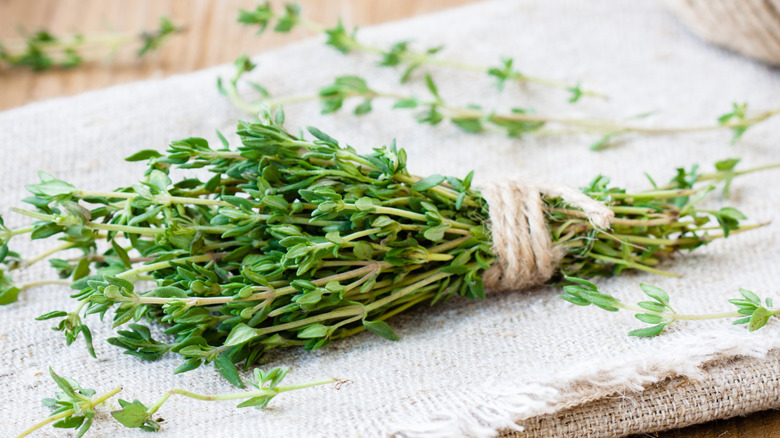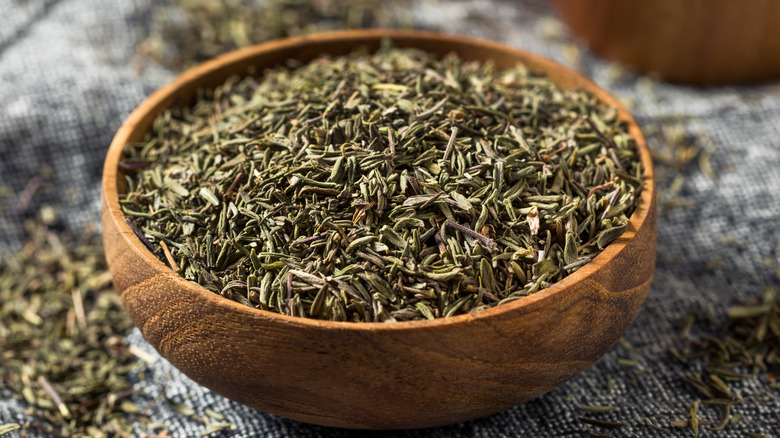How Much Dry Thyme Is Equivalent To A Sprig?
While cooking isn't as much of a science as baking, that doesn't mean that measuring ingredients is out of the question. In order to achieve a recipe's intended result, accuracy still matters. One problem is that this can prove somewhat complicated when it comes to working with herbs. Some recipes may require precisely 1 teaspoon or tablespoon of thyme, meanwhile others will call for a more ambiguous amount — a sprig. Naturally, this raises the question, how big is a sprig when compared to dried equivalents?
The most appealing part of any delicate or woody herb is its leaves. Responsible for doing much of the heavy lifting (providing flavor and aromatics) in a recipe, these flowering buds grow on little branches, which are dubbed sprigs. Although they differ in size based on the herb and the individual plant, thyme sprigs tend to be about 5 inches long. That said, if you were to pluck off its abundance of sweetly citrusy yet peppery leaves, a single sprig would yield roughly ½ tablespoon of fresh thyme, which would be equivalent to about ½ teaspoon of dried thyme leaves.
Given that exact quantities can vary based on the state of a sprig, occasionally, you might be left with more or less thyme. The important thing, however, is recognizing when sprigs are relevant to a recipe and when they can instead be swapped for dried thyme.
Guidelines for trading types of thyme
Unlike fresh sprigs, dried thyme has an incredibly long shelf-life. But it can't always be used in the same way. Since dried herbs tend to boast a stronger intensity, they need to be used modestly — thyme is no different. As a result, both dried and fresh renditions need to be worked into recipes differently so as to express them in the best way possible.
If you want to impart brighter and fresher flavors to a dish, working with fresh sprigs of thyme is a must. To preserve this vibrancy and prevent wilting, just-picked leaves should be added towards the end of the cooking process. Plus, fresh herbs make for an impressive edible garnish, providing a wonderful pop of color to fresh salads, meaty entrees, and even sweet treats. In comparison, dried thyme is geared towards being a building block of flavor. It may lack the same degree of visual appeal as fresh thyme, but dried or ground leaves still provide a lot of flavor. The trick is incorporating the dried version earlier in the cooking process, allowing its flavor to fully diffuse into recipes like slow-simmer stews and braises.
Despite that fresh sprigs and dried thyme share the same flavor profile, depending on the recipe, they don't always prove to be interchangeable. If you do find yourself in a scenario where a swap makes sense, at least you know that a sprig can be (somewhat) quantified!

